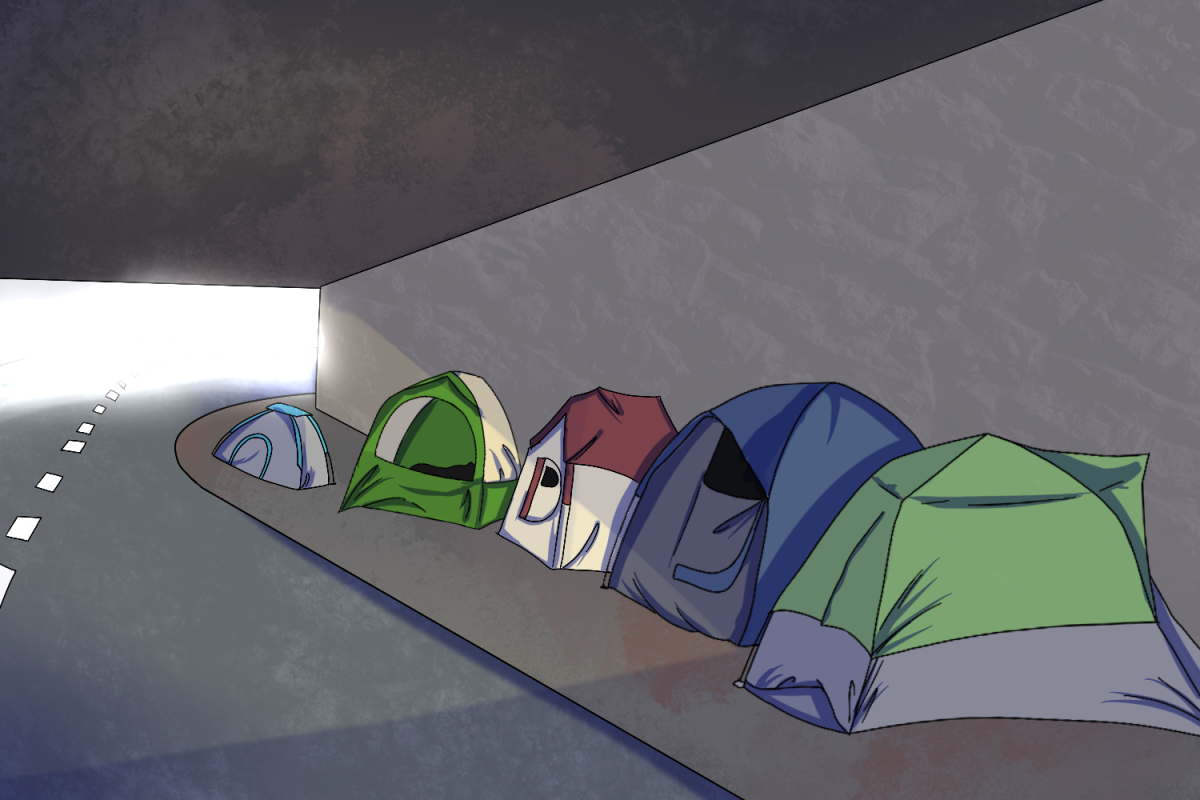Not even one minute into the city of San Francisco lies a homeless encampment. Drive for a few more minutes, and countless more are revealed.
It seems as if homelessness in California is a never-ending crisis.
The Government of California has provided billions of dollars to combat homelessness over the past few years, yet the problem has not subsided. In fact, it has gotten worse. According to the U.S. Department of Housing and Urban Development, California saw a 5.8% increase in homelessness from 2022 to 2023.
According to the same study, both sheltered and unsheltered homeless families make up around 28.5% of the homeless population in California. The harsh reality is anyone can become homeless.
Take, for example, a family of four living in the Bay Area where one parent is a schoolteacher and the other a factory worker. Unfortunately, the parent who worked at the factory was laid off due to an injury. Living costs are difficult to manage with one parent down a job, a teacher’s salary averaging around $47 an hour, and two kids to look after.
The high cost of living in California is a significant factor in the rise of homelessness, but other factors contribute as well, indicating the difficulty of finding a solution.
Throwing money at the problem cannot solve anything because it does not get to the root cause. According to the 2022 San Francisco Homeless Count and Survey (PIT Count), reasons that can prevent a homeless person from gaining their footing and stability range from drug and alcohol abuse to mental, physical, and chronic health disorders.
According to the PIT Count, the majority of homeless people are unsheltered, sitting at 68%. Unfortunately, an unsheltered homeless person is less likely to have access to resources that help with these issues.
Mental health resources are especially inaccessible.
According to the 2023 Financial State of Private Practice Report, most therapists in California cost $150 to $175. Also, 63.5% of people surveyed said they planned on raising their rates due to inflation. Unfortunately, this widens the gap in accessible mental health services for homeless people.
The majority of therapists also do not take insurance, according to the same report. Those with reimbursements are mostly under $100 or $100-125, but not many do.
Many homeless people barely have enough money to live on, as the majority of homeless workers make $19 an hour, let alone have the money to afford therapy. For example, the median San Francisco rent is $3,295 monthly and $39,480 yearly. That is only $40 less than the average yearly salary of a homeless worker, assuming they work 40 hours a week.
As one of the top five wealthiest states in the U.S., California needs to get its act together.
California Gov. Gavin Newsom recently revised his 2024-2025 budget plan, revealing California’s billion-dollar deficit, which can only be solved by cutting funds.
Despite being an extremely wealthy state, Newsom’s plan shows California is spending more than it is making. The state must make sacrifices and weigh the importance of funds and services as it moves to reduce the deficit. Unfortunately, the government is now forced to cut funding across the board.
In theory, with more services available for homeless people to help them get back on their feet, more people will regain mental, physical, and financial stability. Reducing homelessness has the added benefit of increased revenue from tax-paying citizens who are now financially stable. In the long run, prioritizing homelessness is a better option because if there are fewer homeless people, then fewer funds will be needed for those same services and can be allocated elsewhere.
However, there may be hope for homelessness in California and the Bay Area in the near future. On May 14, Newsom traveled to San Jose and announced his plan to fund $3 billion to build behavioral and mental health treatment centers and homeless housing. Still, only time may tell whether this plan will work.
California must commit more to helping the homeless. Otherwise, the problem will never be fixed.












